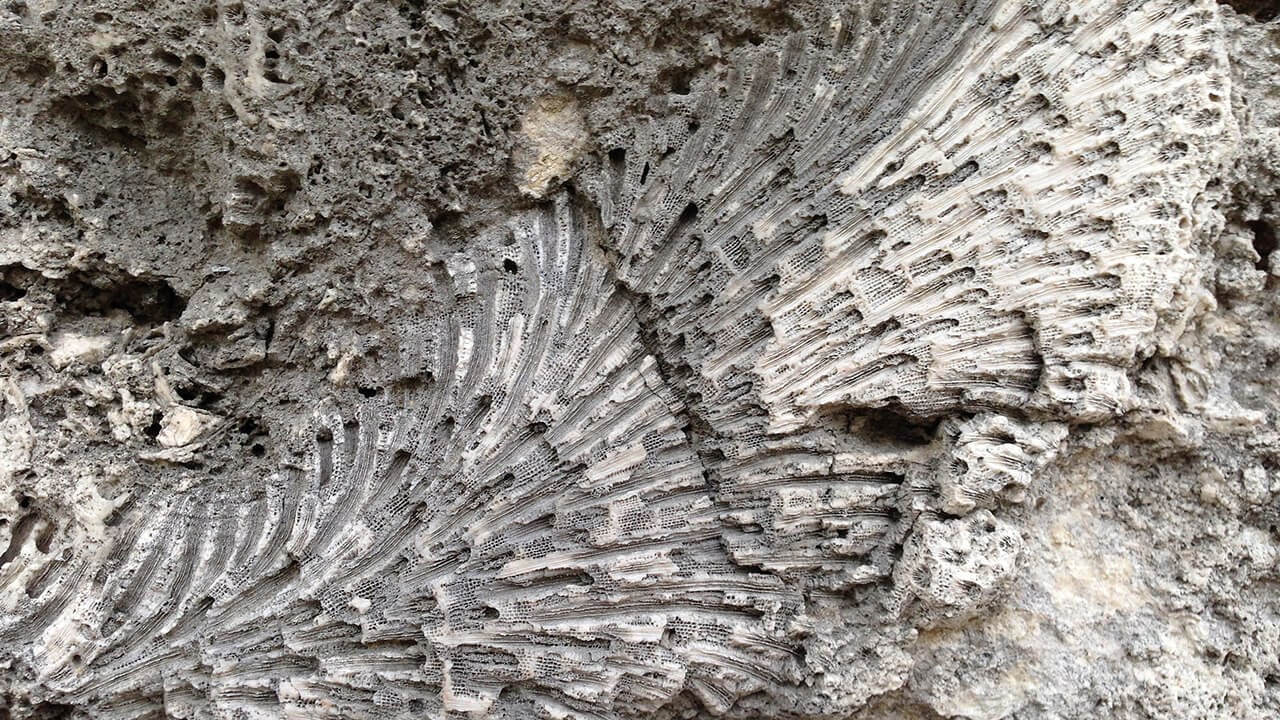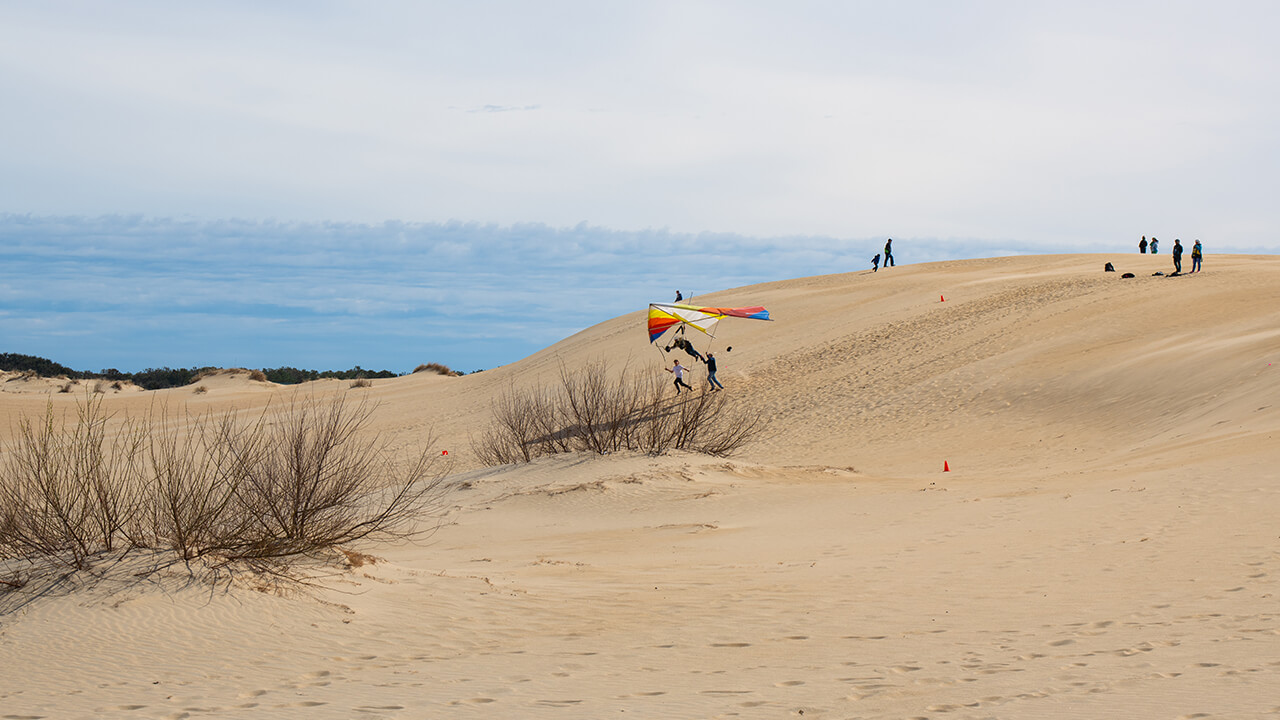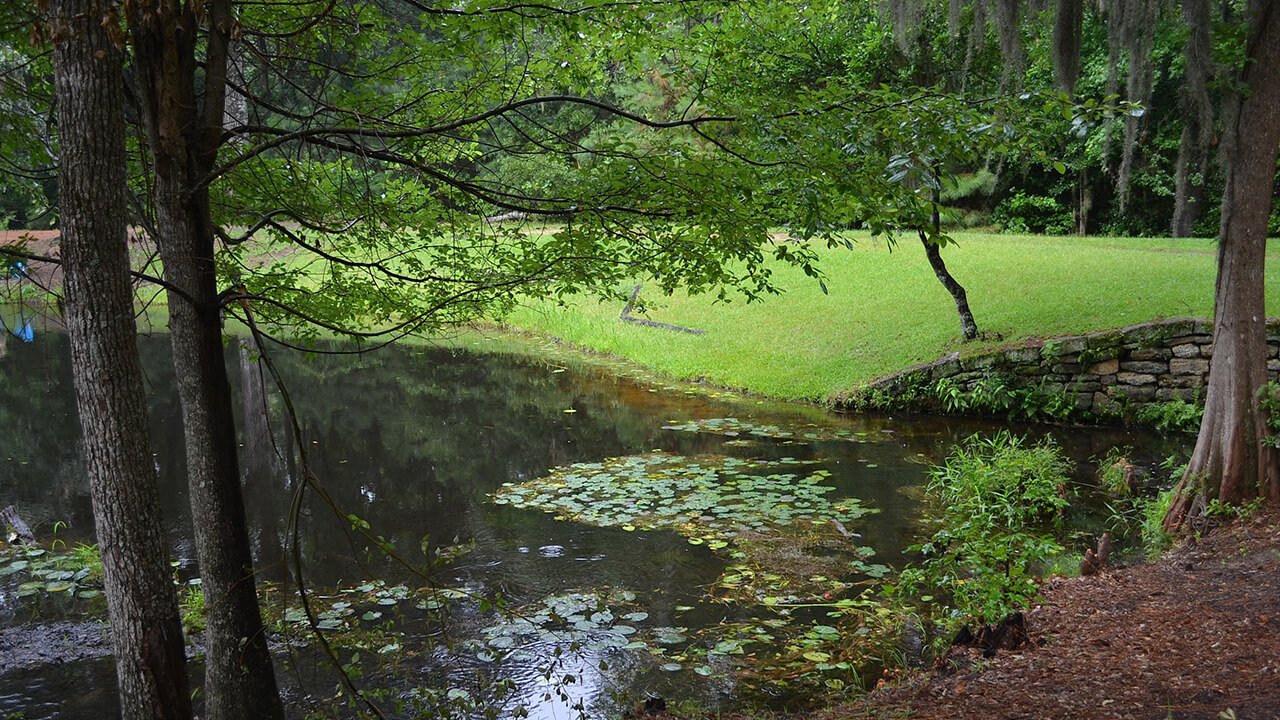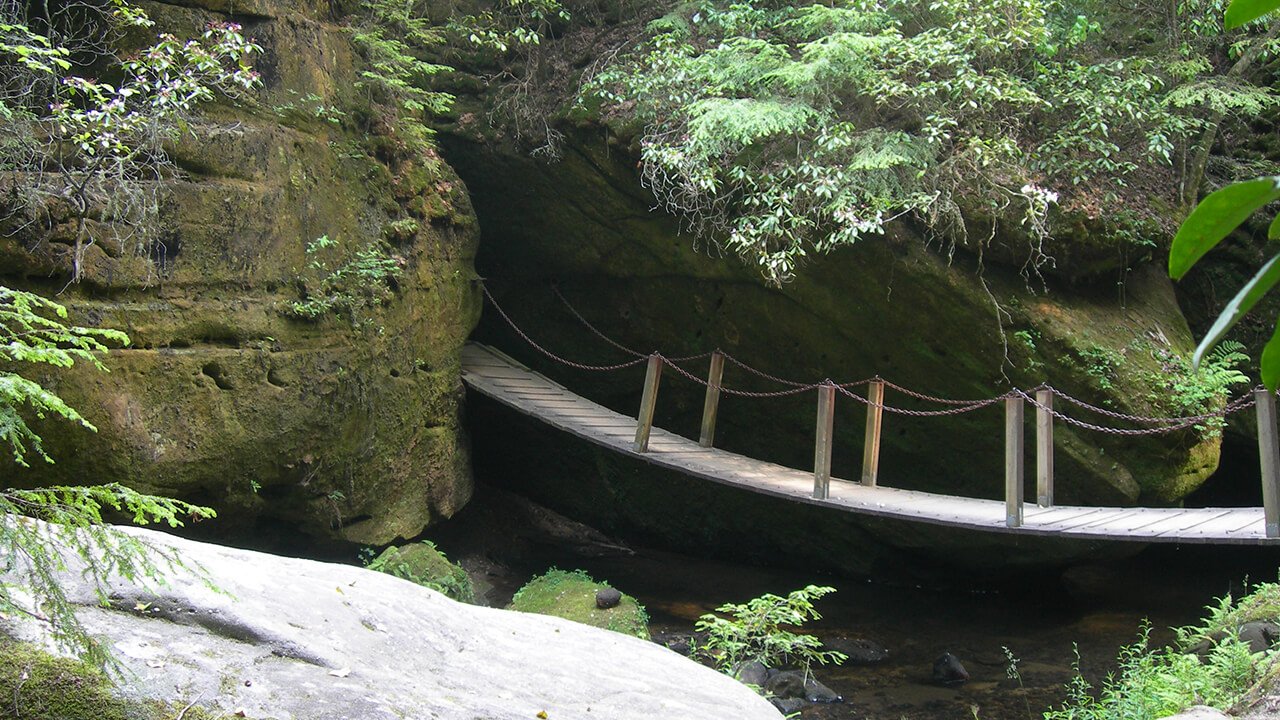But what about a giant sand dune? Or a canyon full of rare glow worms?
Believe it or not, these places exist — and they’re not alone as counterculture parks. Here are five of the most unique and unexpected natural parks that the Southeast has to offer.
Windley Key Fossil Reef Geological State Park — Islamorada, FL

Windley Key Fossil Reef Geological State Park sounds boring at first glance. Enormous chunks of limestone sit in an abandoned quarry, remnants of what famous Florida industrialist Henry Flagler once used to build the Overseas Railroad in the early 20th century.
But that history doesn’t tell you what was revealed when the rock split apart.
There, sandwiched between stone, are various ancient coral fossils. Dating over 100,000 years, these corals come in all shapes and sizes, from large fan-like structures to small geometric-patterned sponges. Visitors can walk along the 8-foot-high walls to peer back into history and enjoy five different trails that tangle through the quarry and the Keys’ beautiful natural Florida wildlife.
At $2.50 per person, Windley Key Fossil Reef Geological State Park is an affordable location, too. You can learn more about the site here.
Providence Canyon State Park — Lumpkin, GA

Canyons are typically something you’d see on the West Coast. But here in the Southeast, we have a pocket of beautiful ravines — Georgia’s Providence Canyon State Park.
Unlike other canyons, Providence Canyon’s formations weren’t carved by rain and wind over millions of years. The 150-foot-deep gullies are the product of soil erosion from poor 19th-century agricultural practices. But even as they stand as a reminder of man’s influence on the earth, they provide a stunning, multi-colored backdrop for photographs and walks.
Providence Canyon State Park boasts more than 10 miles of trails, including a Backcountry Trail that backpackers can camp along for fantastic views of the canyon and its surrounding forestry. Visitors can even come across rare plants like the Plumleaf Azalea, which only grows in this region and blooms in the summer instead of the spring, like other azaleas. But if you aren’t one for camping, you could also visit the site’s museum or enjoy an outdoor picnic.
The $5 parking fee is the park’s only entry cost. Otherwise, you’re free to roam as you please. To learn more about Providence Canyon State Park, visit its website.
Jockey’s Ridge State Park — Nags Head, NC

As a coastal region, the Southeast is no stranger to sand. But Jockey’s Ridge State Park has more than most, hosting the Atlantic coast’s tallest sand dune.
Constantly changing at the mercy of the wind, Jockey’s Ridge can sometimes build up to 60 feet tall. And it isn’t alone — several other large dunes surround it, too. Visitors enter the sand on a 360-foot boardwalk stretching from the visitor’s center and museum. Once on the land, you’re free to splash in the water of the nearby Roanoke Sound, check out the local plants and wildlife on walking trails, or try the area’s favorite pastime — hang gliding.
If you don’t know how to hang glide, that’s okay. Newbies can take lessons from Kitty Hawk Kites near the visitor center’s entrance. Experienced hang gliders can glide independently once registered with the park’s office. But if you’d rather stick with sports on the ground, you can also try sandboarding down the dune’s slopes or even surfing if the waves are in your favor.
Jockey’s Ridge State Park is completely free to enter. To learn more about the site, visit its website.
Poinsett State Park — Wedgefield, SC

Settled in the small South Carolina town of Wedgefield, Poinsett State Park is nothing short of a natural haven, filled with lush vegetation and lakes. Yet it’s also been called ‘weird’ for decades, compared to oddities like The Twilight Zone.
That’s because of the park’s unique position between the South Carolina Sandhills and the coastal plain region. This ecosystem mix yields incredible biodiversity stretching across the park’s 1,000 acres, offering everything from mountains to low country sightseeing.
Poinsett State Park has more than 25 miles to hike or bike. Its most famous path is the Palmetto Trail, which stretches through the Manchester State Forest. The trail is made up of more than 30 separate passages, which take you meandering up and down tall bluffs, strolling past 60-foot waterfalls, and spotting hundreds of species of flowering plants. The park is also home to the 10-acre Levi Mill Lake, perfect for swimming, boating, and fishing.
General admission is just $3, but visitors can rent cabins and lake equipment. Learn more about Poinsett State Park here.
Dismals Canyon — Phil Campbell, AL

Dismals Canyon is one of the few places on earth home to Dismalites, larvae that emit bright blue-green light to attract food. Clutching to the sides of the canyon more than 100 feet down, these Dismalites light up the night like stars, forming constellations on the cave walls. Visitors can see the spectacle on a guided tour.
Although not a state park, Dismals Canyon was named a National Natural Landmark in 1975 — and that’s not just because of the glow worms. The canyon itself, formed from geological disturbances more than 300 million years ago, is a popular attraction during the daytime. A hiking trail runs along the canyon’s floor, passing by towering moss-clung boulders, deep green ferns, and sparkling waterfalls.
A self-guided day tour costs $12 per adult, and a guided night tour is $10. The site is also home to two cabins for rent. Check out Dismals Canyon’s website to learn more.

